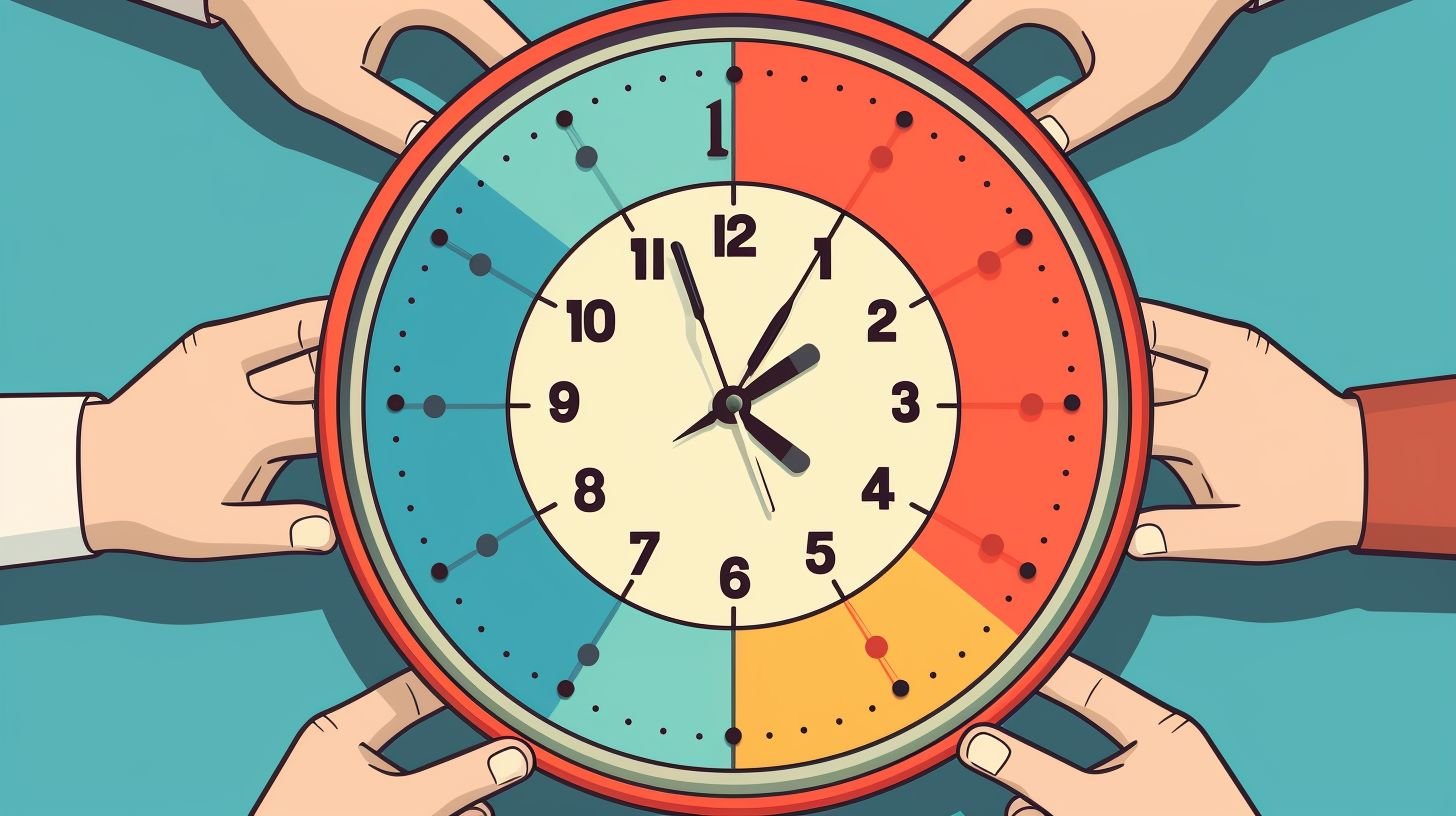The Impact of Market Downturns on Retirement Funds

Key Takeaways
- Market downturns can have a significant impact on retirement funds, especially 401(k) accounts and target date funds.
- It’s important to maintain the right portfolio mix, diversify investments, and keep cash reserves to protect retirement savings during market volatility.
- Being disciplined about withdrawals and avoiding emotional decision – making are key strategies for safeguarding retirement funds from market fluctuations.
Understanding Market Volatility in Retirement
 Market volatility can stir up quite a worry. It’s like a big seesaw that keeps shifting your retirement fund. Up and down, it never seems to stop. Now picture this! You’re on that seesaw in the park of financial markets. What do you think will happen to your savings when stocks go down?. The truth is, market swings can work both ways. Sure, they might drop your value for some time but remember how a seesaw works? It comes back up too! Some people sell their stocks when prices fall – afraid they could lose more money. But selling during a slump usually does more harm than good! Why so? Well, once you sell at low prices, getting back in can cost extra bucks if the market recovers. Here’s what I learned from the bear markets since the 1960s through 2021: A wise move is to keep cool and give it about 3-4 years’ time on average for recovery! So hold onto those conservative investments and let them grow with time. I also find it helpful to have enough cash set aside for my retirement needs over two-four years. This way I don’t have to fret about day-to-day shifts in stock values or be forced into selling off my stocks whenever there’s an economic slide-down. Lastly, planning ahead matters much too! Have clear cut plans on how much money you’d need each year after retiring; because running out of steam halfway isn’t fun is it? A financial planner could help chalk out these plans or even online tools work just fine! Just make sure you stick by them and keep revising as needed.
Market volatility can stir up quite a worry. It’s like a big seesaw that keeps shifting your retirement fund. Up and down, it never seems to stop. Now picture this! You’re on that seesaw in the park of financial markets. What do you think will happen to your savings when stocks go down?. The truth is, market swings can work both ways. Sure, they might drop your value for some time but remember how a seesaw works? It comes back up too! Some people sell their stocks when prices fall – afraid they could lose more money. But selling during a slump usually does more harm than good! Why so? Well, once you sell at low prices, getting back in can cost extra bucks if the market recovers. Here’s what I learned from the bear markets since the 1960s through 2021: A wise move is to keep cool and give it about 3-4 years’ time on average for recovery! So hold onto those conservative investments and let them grow with time. I also find it helpful to have enough cash set aside for my retirement needs over two-four years. This way I don’t have to fret about day-to-day shifts in stock values or be forced into selling off my stocks whenever there’s an economic slide-down. Lastly, planning ahead matters much too! Have clear cut plans on how much money you’d need each year after retiring; because running out of steam halfway isn’t fun is it? A financial planner could help chalk out these plans or even online tools work just fine! Just make sure you stick by them and keep revising as needed.The Impact of Market Downturns on Retirement Funds
 Market downturns can have significant effects on retirement funds, particularly on 401(k) accounts and the risk associated with target date funds.
Market downturns can have significant effects on retirement funds, particularly on 401(k) accounts and the risk associated with target date funds.Effects on 401(k) accounts
A market slump hurts 401(k) accounts more than we think. Cash from selling low-priced investments in a bad market can lower these accounts’ value. To fight this, I keep cash for a year’s worth of needs. It keeps me away from selling when prices drop. For added safety, I hold enough funds to cover two to four years of my needs in safe and easy-to-sell assets too. In most bear markets, a cushion for four years helps manage risks well. Soon the storm will pass and the need to sell at low prices won’t be there!Risk associated with target date funds
Target date funds hold a mix of stocks and bonds. While they can make money grow, there’s also risk involved. Some top target date funds saw their value drop by 10% to 22% in one year. This meant that people who had put their money in these funds lost part of it. From the last bit of 2021 to the start of this year, over $100 billion was lost from these funds. That is a lot of retirement dreams gone! So while target date funds can be good for some, others may find the risks too high. Always think about your comfort with risk before you choose where to put your money for retirement.How Much Will You Need to Retire?
 Figuring out how much money you will need to retire is a big step. Here’s a simple list to help you:
Figuring out how much money you will need to retire is a big step. Here’s a simple list to help you:- Look at your current costs. How much do you spend in a year? Don’t forget about small costs.
- Think about your future costs. Will they go up or down when you retire?
- Set aside money for health care. You might need more care as you get older.
- Don’t forget about fun! Make sure you have money to do things you enjoy.
- You should keep at least one year’s worth of these costs in cash investments, especially if the market is bad.
- Keep more cash if the market is really bad, maybe even four years’ worth of costs!
- Don’t sell your assets when the price is low during a downturn it can hurt your future growth.
Strategies to Protect Retirement Funds From Market Volatility
 Protecting your retirement funds from market volatility is crucial in ensuring a secure financial future. Learn about effective strategies to safeguard your retirement savings and make informed decisions during market downturns.
Protecting your retirement funds from market volatility is crucial in ensuring a secure financial future. Learn about effective strategies to safeguard your retirement savings and make informed decisions during market downturns.Maintaining the right portfolio mix
To maintain the right portfolio mix, it’s important to find a balance between different types of investments. This means spreading your money across stocks, bonds, and cash equivalents. Stocks have the potential for higher returns but also come with more risk. Bonds are considered safer but may provide lower returns. Cash equivalents offer stability and easy access to funds when needed. By diversifying your portfolio in this way, you can potentially reduce risk while still aiming for growth. It’s recommended to regularly review and rebalance your portfolio as needed to ensure that it aligns with your long-term financial goals and risk tolerance.Importance of diversification
Diversification is crucial when it comes to protecting your retirement funds from market volatility and the impact of downturns. By spreading your investments across different asset classes, such as stocks, bonds, and cash equivalents, you reduce the risk of losing everything if one investment performs poorly. Diversification helps to balance potential losses with potential gains, ensuring that your portfolio remains more stable during turbulent times. It’s like not putting all your eggs in one basket – it spreads out the risk and increases the likelihood of achieving a positive return over time. So diversify wisely to safeguard your retirement savings!Keeping some cash on hand
During market downturns, it’s important to have some cash on hand as part of your retirement strategy. The idea is to hold the equivalent of at least a year’s worth of anticipated withdrawals in cash investments. This means having enough money readily available so that you don’t have to sell off your investments at a loss during volatile times. It can provide a cushion and give you peace of mind knowing that you have immediate access to funds if needed. Experts also recommend holding two to four years’ worth of anticipated withdrawals in relatively liquid, conservative investments during a market downturn. Having this four-year cushion can help manage risk during most bear markets, allowing you time for your investments to potentially recover before needing to tap into them again for income.Being disciplined about withdrawals
When it comes to withdrawing money from your retirement funds during a market downturn, it is crucial to be disciplined. It can be tempting to panic and withdraw more than necessary when stock prices are falling. However, this impulsive decision-making can have long-term negative consequences for your retirement savings. Instead, create a withdrawal plan based on your anticipated expenses and stick to it. By maintaining discipline and only withdrawing what you truly need, you can help protect your retirement funds and increase the chances of a successful financial future.Avoiding emotional decision making
During market downturns, it’s important to avoid making decisions based on emotions. When we let fear or panic guide our choices, we may end up selling investments at a loss or making hasty moves that can negatively impact our retirement funds. It’s crucial to stay disciplined and stick to a long-term investment strategy, even when the markets are volatile. By focusing on the bigger picture and understanding that market fluctuations are normal, we can resist the urge to make impulsive decisions that could harm our financial future. Instead of reacting emotionally, we should seek guidance from professionals and take a rational approach to managing our retirement funds.The Role of Comprehensive Planning in Retirement
 Comprehensive planning is crucial in retirement to navigate market downturns, adjust spending, explore cash solutions, strategically withdraw savings, rebalance portfolios, and make tax-efficient choices. Discover how you can protect your retirement funds and achieve long-term financial security by reading more.
Comprehensive planning is crucial in retirement to navigate market downturns, adjust spending, explore cash solutions, strategically withdraw savings, rebalance portfolios, and make tax-efficient choices. Discover how you can protect your retirement funds and achieve long-term financial security by reading more.Adjusting spending during market downturns
During market downturns, it is important for retirees to adjust their spending in order to protect their retirement funds. Here are some strategies to consider:- Prioritize essential expenses: Identify your essential expenses, such as housing, food, and healthcare, and make sure these are covered before spending on discretionary items.
- Reduce discretionary spending: Cut back on non-essential expenses like dining out, entertainment, and travel. Look for ways to save money without sacrificing too much.
- Delay major purchases: Postpone big-ticket items like a new car or home renovation until the market improves. This can help preserve your retirement savings.
- Review insurance policies: Take a look at your insurance coverage to make sure you’re not overpaying for unnecessary or duplicate policies. Consider adjusting coverage levels if needed.
- Minimize debt: Focus on paying off high-interest debts like credit cards as quickly as possible. By reducing or eliminating debt, you’ll have more flexibility during market downturns.
- Evaluate investment fees: Assess the fees associated with your investments and consider lower-cost options if available. This can help maximize returns during a downturn.
- Explore part-time work: If feasible, consider taking on part-time or freelance work to supplement your retirement income during market downturns.
- Stay informed and adapt: Keep up with financial news and consult with a financial advisor if needed to stay informed about changes in the market and adjust your strategy accordingly.
Exploring other cash solutions
During market downturns, it’s important to explore other cash solutions in order to minimize the need to tap into your investment portfolios. Here are some options to consider:- Utilize emergency funds: If you have an emergency fund set aside for unexpected expenses, this can be a great resource during market downturns. Use this fund to cover any immediate financial needs instead of dipping into your retirement accounts.
- Tap into neglected accounts: Take a look at any neglected accounts you may have, such as unused checking or savings accounts. These funds can be used as a temporary source of cash during market downturns.
- Seek out refunds: If you have any outstanding refunds due from previous purchases or services, now is the time to reach out and claim them. These refunds can provide an additional source of cash that can help supplement your retirement funds.
- Consider part-time work: If possible, exploring part-time work opportunities can provide an additional income stream during market downturns. This extra income can help cover expenses without relying solely on your retirement savings.
Strategic withdrawal from savings
Strategically withdrawing from your savings can help protect your retirement funds during market downturns. Here are some key strategies:- Prioritize essential expenses: Focus on covering your essential living expenses first, such as housing, food, and healthcare.
- Reduce discretionary spending: Cut back on non-essential expenses like dining out or entertainment to conserve your savings.
- Tap into cash reserves first: Use any cash reserves or emergency funds you have before touching your investment accounts.
- Consider delaying Social Security: If possible, delaying your Social Security benefits can provide higher monthly payments in the long run.
- Utilize tax-efficient withdrawal strategies: Optimize withdrawals to minimize taxes by withdrawing from taxable accounts first and taking advantage of favorable tax rates.
- Implement a systematic withdrawal plan: Establish a planned withdrawal rate based on your anticipated needs and adjust it periodically as circumstances change.
Rebalancing your portfolio
To protect your retirement funds from market volatility, it’s important to regularly rebalance your portfolio. Here are some key steps to follow:- Assess your current asset allocation: Take a look at how your investments are distributed across different asset classes like stocks, bonds, and cash equivalents.
- Determine your target allocation: Decide on the ideal mix of assets based on your risk tolerance and long-term financial goals.
- Sell high, buy low: If certain investments have performed well and now represent a larger portion of your portfolio than intended, consider selling some of those assets to bring your portfolio back into balance. Similarly, if some investments have declined in value, you may want to buy more of them to maintain the target allocation.
- Consider tax implications: Rebalancing may trigger taxable events such as capital gains or losses. Consult with a financial advisor or tax professional to make informed decisions that minimize the impact on your taxes.
- Stick to a disciplined approach: Rebalance your portfolio at regular intervals (e.g., annually) or when significant market shifts occur. Avoid making emotional decisions based on short-term market fluctuations.
Making tax-efficient choices
In retirement planning, it’s important to make tax-efficient choices. Here are some strategies to consider:- Utilize tax – exempt bonds or fixed income securities to reduce taxable income.
- Take advantage of tax – loss harvesting by selling investments that have declined in value to offset gains.
- Be aware of the long – term capital gains rate, which is typically lower than the federal ordinary income tax rate.
- Consider the impact of taxes when deciding which assets to sell from taxable non-retirement accounts.
The Importance of Timing in Retirement
 Timing plays a crucial role in retirement planning. When it comes to retiring, the timing of your decisions can have a significant impact on your financial well-being. One important aspect is when to start withdrawing money from your retirement funds. Selling investments at depressed prices during a market downturn can have negative consequences for retirees, as it may reduce their portfolio’s overall value and limit future growth potential. To manage this risk, it is recommended to hold a year’s worth of anticipated withdrawals in cash investments. This allows you to tap into these funds instead of selling off investments when their prices are low. By having this cushion, you are better positioned to weather bear markets that can last several years. Additionally, the timing of when you begin making withdrawals is also important. Many retirees follow the rule of withdrawing 4% of their portfolios in the first year and adjusting for inflation thereafter. However, depending on market conditions and your specific circumstances, you might need to be flexible with this rule or adjust your withdrawal strategy accordingly. To make informed decisions about timing in retirement, it can be beneficial to work with a financial planner or use online tools that provide more precise calculations for withdrawals and spending patterns based on various scenarios and assumptions. These resources take into account factors such as market volatility, investment returns, inflation rates, and other variables that can impact the longevity of your retirement savings. Overall, understanding the importance of timing in retirement helps ensure that you make strategic choices regarding when and how much money to withdraw from your nest egg so that you can achieve long-term financial stability throughout your retirement years.
Timing plays a crucial role in retirement planning. When it comes to retiring, the timing of your decisions can have a significant impact on your financial well-being. One important aspect is when to start withdrawing money from your retirement funds. Selling investments at depressed prices during a market downturn can have negative consequences for retirees, as it may reduce their portfolio’s overall value and limit future growth potential. To manage this risk, it is recommended to hold a year’s worth of anticipated withdrawals in cash investments. This allows you to tap into these funds instead of selling off investments when their prices are low. By having this cushion, you are better positioned to weather bear markets that can last several years. Additionally, the timing of when you begin making withdrawals is also important. Many retirees follow the rule of withdrawing 4% of their portfolios in the first year and adjusting for inflation thereafter. However, depending on market conditions and your specific circumstances, you might need to be flexible with this rule or adjust your withdrawal strategy accordingly. To make informed decisions about timing in retirement, it can be beneficial to work with a financial planner or use online tools that provide more precise calculations for withdrawals and spending patterns based on various scenarios and assumptions. These resources take into account factors such as market volatility, investment returns, inflation rates, and other variables that can impact the longevity of your retirement savings. Overall, understanding the importance of timing in retirement helps ensure that you make strategic choices regarding when and how much money to withdraw from your nest egg so that you can achieve long-term financial stability throughout your retirement years.How Does Life Insurance Protect Retirement Funds During Market Downturns?
Life insurance plays a crucial role in retirement by safeguarding funds during market downturns. When investments dip, the death benefit from a life insurance policy can provide a safety net for beneficiaries. This guarantees financial security and prevents retirement funds from being depleted. The role of life insurance in retirement is to act as a reliable shield against market uncertainties, ensuring a stable future for loved ones.






